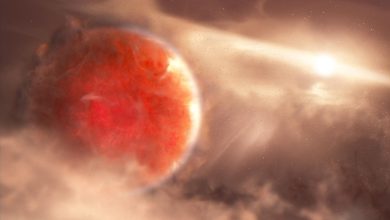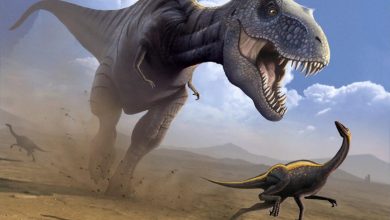Latest Articles
-
Apr- 2022 -9 AprilVirology

5,500 New RNA Virus Species Discovered in the Ocean – Tracing the Origins of Viruses and the Origins of Life
Ocean Water Samples Yield Treasure Trove of RNA Virus Data Ocean water samples collected around the world have yielded a treasure trove of new data about RNA viruses, expanding ecological research possibilities and reshaping our understanding of how these small but significant submicroscopic particles evolved. Combining machine-learning analyses with traditional evolutionary trees, an international team of researchers has identified 5,500 new RNA virus species that represent all five known RNA virus phyla and suggest there are at least five new RNA virus phyla needed to capture them. The most abundant collection of newly identified species belong to a proposed phylum…
Read More » -
8 AprilDisease

Stanford Engineers Enhance the “Attack Power” of Cutting-Edge Cancer Treatment
Engineers develop a simple delivery method that enhances a promising cancer treatment. One cutting-edge cancer treatment exciting researchers today involves collecting and reprogramming a patient’s T cells – a special set of immune cells – then putting them back into the body ready to detect and destroy cancerous cells. Although effective for widespread blood cancers like leukemia, this method rarely succeeds at treating solid tumors. Now, Stanford University engineers have developed a delivery method that enhances the “attack power” of the modified immune cells, called chimeric antigen receptor (CAR) T cells. Researchers add CAR-T cells and specialized signaling proteins to…
Read More » -
7 AprilAstronomy

Hubble Finds a Massive Planet – 9 Times the Size of Jupiter – Forming Through a Violent Process
Lead Image: This is an artist’s illustration of a massive, newly forming exoplanet called AB Aurigae b. Researchers used new and archival data from the Hubble Space Telescope and the Subaru Telescope to confirm this protoplanet is forming through an intense and violent process, called disk instability. Disk instability is a top-down approach, much different from the dominant core accretion model. In this scenario, a massive disk around a star cools, and gravity causes the disk to rapidly break up into one or more planet-mass fragments. AB Aurigae b is estimated to be about nine times more massive than Jupiter…
Read More » -
6 AprilPaleontology

Paleontologist’s New Theory for Why T. rex Had Such Ridiculously Short Arms
T. rex’s short arms may have lowered risk of bites during feeding frenzies. Over the two decades paleontologist Kevin Padian taught a freshman seminar called The Age of Dinosaurs, one question asked frequently by undergraduates stuck with him: Why are the arms of Tyrannosaurus rex so ridiculously short? He would usually list a range of paleontologists’ proposed hypotheses — for mating, for holding or stabbing prey, for tipping over a Triceratops — but his students, usually staring a lifesize replica in the face, remained dubious. Padian’s usual answer was, “No one knows.” But he also suspected that scholars who had…
Read More » -
6 AprilAI

Humanity’s Future in the Age of Artificial Intelligence
For the MIT Schwarzman College of Computing Dean Dan Huttenlocher, bringing disciplines together is the best way to address challenges and opportunities posed by rapid advancements in computing. What does it mean to be human in an age where artificial intelligence agents make decisions that shape human actions? That’s a deep question with no easy answers, and it’s been on the mind of Dan Huttenlocher SM ’84, PhD ’88, dean of the MIT Schwarzman College of Computing, for the past few years. “Advances in AI are going to happen, but the destination that we get to with those advances is…
Read More »










